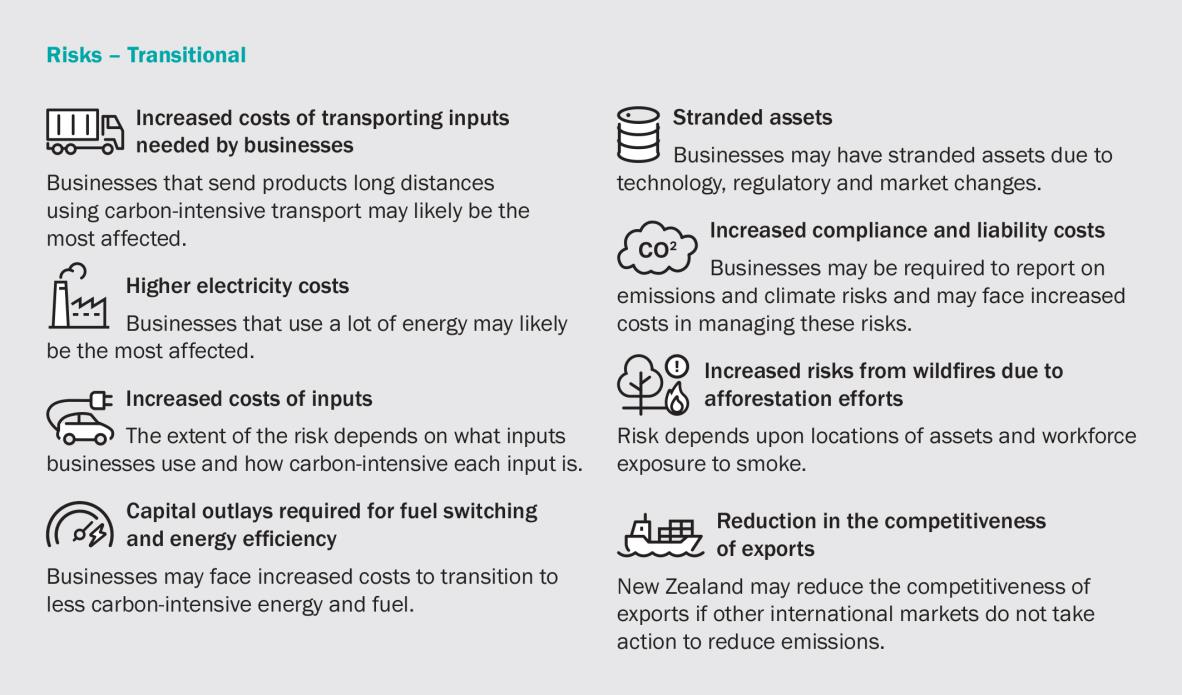To understand the potential implications of physical risks from climate change, as well as the implications of transitioning to net zero, Tātaki Auckland Unlimited undertook an economic climate change risk assessment for the region that organisations can use to identify actions they can take to build climate resilience.
Tāmaki Makaurau is already experiencing the impacts of climate change and these disruptions highlight vulnerabilities in our regional economy.
To build climate resilience for our economy, Tāmaki Makaurau needs to have the ability to anticipate, prepare for, and respond to hazardous events, trends, or disturbances related to climate change. Building resilience to future climate shocks and stresses involves evaluating climate-related risks and planning for changes.
This assessment looked at risks and opportunities in relation to priority sectors in the Auckland region: construction, food and beverage, screen, visitor economy, advanced manufacturing and technology. There was also specific consideration of risks and opportunities for Māori businesses. (See: Climate Change in Tāmaki Makaurau: Understanding how risks and opportunities may be different for Māori Businesses).
The graphics below illustrates how risks and opportunities (physical and transitional) are caused by a variety of drivers. Physical risks are caused by climate change hazards, and transitional risks are caused by changes to policy, litigation, technology, markets and reputation as we transition to low carbon.

Figure 1 – Summary of drivers and risks
Physical climate-related risks
We call the negative impacts arising from a changing climate ‘physical risks’. For example, changing rainfall patterns that produce flooding are physical risks as they cause damage to homes, businesses and critical infrastructure across the region. The table below shows a summary of physical risks applicable to four target sectors (construction, food and beverage, screen and visitor economy).

Figure 2 - Physical climate risks summary
Cross-sector physical risks to consider and prepare for include:
- Disruptions to information and communication technology systems
- Damaged or destroyed road networks
- The reduction, disruption and/or contamination of water supplies
- Damaged or destroyed built assets that are necessary for service provision
- Disruptions to systems that are sensitive to seasonality and changes in climatic parameters
- People are exposed to environmental hazards
Transitional climate-related risks
To reduce the impacts of climate change, Tāmaki Makaurau Auckland and Aotearoa New Zealand have committed to ambitious targets to reduce greenhouse gas emissions and achieve net zero emissions by 2050. To do this, businesses will need to change how they operate, from relying on fossil fuels to using clean and low carbon technology, processes, and production methods. This transition to a net zero carbon economy will present both challenges and opportunities to businesses and communities, such as increased costs, compliance requirements and market demand. We call these transition risks and opportunities. These factors will be prevalent in the next few decades as we act to reduce emissions. However, the impact will vary depending on the speed and scale of the transition.

Figure 4 - Transitional climate risks
Cross-sector transitional risks to consider and prepare for include:
- Higher electricity costs causing reductions in demand, or reductions in profit margins
- Increased costs of inputs to production due to price on carbon
- Additional capital outlays that will be required for fuel switching and energy efficiency retrofits in response to policy, regulation, consumer demand or market signals
- Stranded assets: investments see their economic life curtailed due to technological, regulatory and or/market changes, stressing balance sheets
- New costs of compliance associated with carbon-related regulation
- Reputational risk if skills required to the transition, or to prosper – are not present in the labour market
- Increased Directors & Offices (F&O) liability insurance costs
- The increased cost of transporting input materials due to increasing fuel costs
For more information see Tamaki Makaurau Economic Climate Change Risk Assessment, Climate change in Tāmaki Makaurau: Understanding how risks and opportunities may be different for Māori Businesses and ECCRA Insights series


